| Sometimes unusual incidents are the reason good things happen.
Such is the case with Austin. The town was actually discovered
in 1862 by a horse belonging to a W. H. Talbott. The horse, by
accident, kicked up a piece of quartz containing gold and silver.
Talbott sent the piece to Virginia City for assay. He staked
out a claim and, when word got out, others followed, and a silver
rush was on. One year later, 10,000 people occupied the town.
A lumber mill had been built and four hundred homes had been
constructed. There were schools, churches, hotels, stores and,
of course, the required number of saloons and pleasure houses.
Many of the structures were of adobe and brick, which minimized
the damage from fires. Floods, however, were the culprit, especially
those of 1868 and 1874 which ravaged the town. By 1880, the mines
began to show signs of exhaustion and its total of $50 million
in ore production was history. Once so difficult to reach, Austin
is now immediately accessible on highway 50. As one of the early
mining towns, it is comparatively unspoiled and is an excellent
example of things as they were. Submitted by: Shawn Hall from his book Romancing Nevada's Past: Ghost Towns And Historic Sites Of Eureka, Lander, And White Pine Counties Click here to purchase his book! 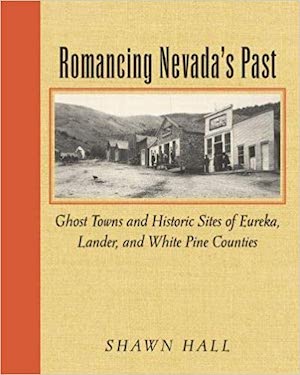
There are any number of stories and theories about how Austin got its name. But suffice to say it got its start in 1863 about a mile further up Pony Canyon from Clifton. The camp grew rapidly. Lander County was formed December 19, 1862. At the time, Lander County constituted almost one-third of Nevada. By 1863, almost 10,000 people had flocked to the Austin area. Austin’s boom prompted the territory’s legislature to move the county seat from Jacobsville to the young silver mining camp. Lots on Main Street sold for an average of $8,000 in gold. The first newspaper arrived in 1863 in the form of the Reese River Reveille. It is still being printed today and claims to be the oldest continuously published newspaper in Nevada. The International Hotel, a landmark of Austin, was first built in Virginia City in 1860 and late in the decade was moved 180 miles east and reconstructed on Austin’s main street. By the time of Austin’s incorporation in 1864, the town’s voting population had grown to 6,000. Austin and Clifton became embroiled in intense competition for supremacy. When Austin won the contest for the county seat in 1863, people began moving from Clifton to Austin. Soon, Clifton was left with only a few empty wooden buildings. Clifton was still active in 1865 but when the mill closed in 1867, the town was abandoned. While Austin’s mining activity was at its peak during the late 1860s and early 1870s, production began to slow down rapidly after that. The last robust year for Austin was 1872 with a production of $250,000. Natural disasters made occasional appearances in Austin. Cloudbursts in Pony Canyon would funnel into town, turning the main street into a river. With almost every good rain, Austin became a quagmire of mud. Today, Austin is a quiet town of about 200 people and remains a historical masterpiece. Many of the original buildings have survived and help the town retain an intriguing vintage flavor. A walk along Austin’s streets transports one back to a bygone era and provides the historian and the casual tourist with a rare glimpse of what life was like 135 years ago.
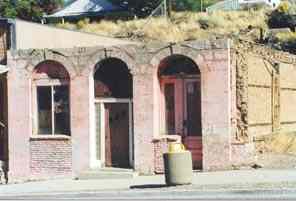
Austin
Courtesy Dolores Steele
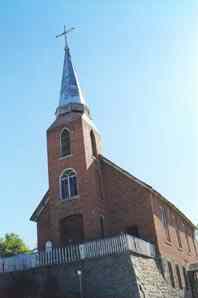
St. Augustine Catholic Church -- 1866
Courtesy Dolores Steele
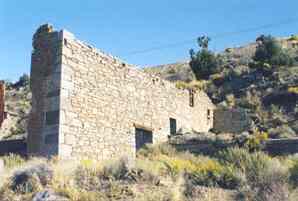
Austin
Courtesy Dolores Steele

International Hotel --- Oldest Hotel in Nevada -- a portion of
the bar and east side of building was the orginial International
Hotel in Virginia city, built 1859. -- Sections of the orginial
building were loaded on the wagons and brought to Austin.
Courtesy Dolores Steele
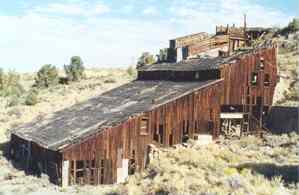
Mine
Courtesy Dolores Steele
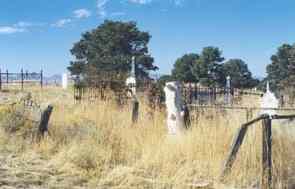
Cemetery
Courtesy Dolores Steele
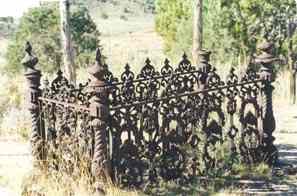
Austin
Courtesy Dolores Steele
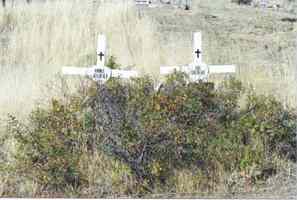
Austin
Courtesy Dolores Steele
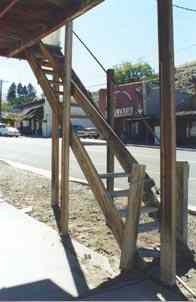
Outside stairway -- Cloud bursts, likely to occur anytime
in this area, were especially severe in the early days, often
carrying huge boulders down Main Street, over turning freight
wagons, drowning horses, and creating great damage. Many outside
stairways leading to residences above stores were built and swing
upward out of the way when cloudburst occured. They also served
as
"locks" to keep intruders from climbing up to second
stories.
Courtesy Dolores Steele
|
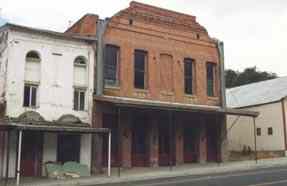
Austin
Courtesy Dolores Steele
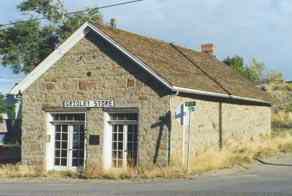
Gridley Store
Courtesy Dolores Steele
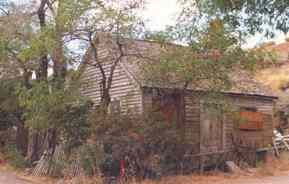
Austin
Courtesy Dolores Steele
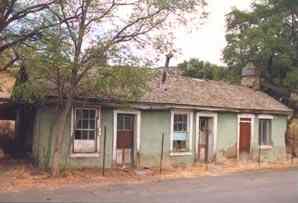
Austin
Courtesy Dolores Steele
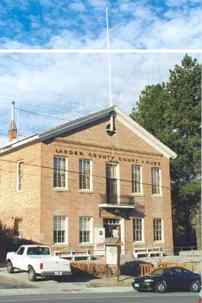
Lander County Court House -- 1871 --- In the early 1880's a man
who murdered a popular rancher was taken from the jail on the
lower floor and lynched from the balcony over the front door.
Courtesy Dolores Steele
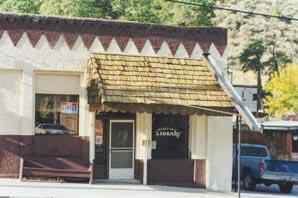
- Nevada's oldest Bank building -- from 1863 -1962
Courtesy Dolores Steele
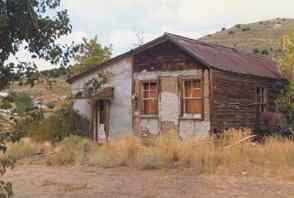
Austin
Courtesy Dolores Steele
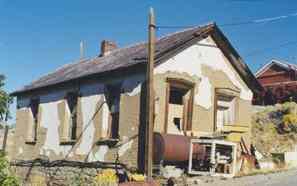
Austin
Courtesy Dolores Steele
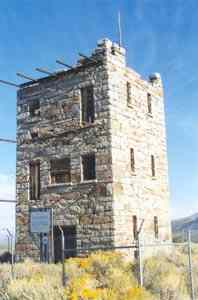
Stokes Castle --Built 1897 -- is exact replica of a tower outside
Rome and was built out of hand hewn native granite. The huge
slabs were raised by a hand operated windlass. Built as a summer
home for an eastern financier.
1st story = kitchen and dinning room
2nd story = living room
3rd story = two bedrooms
Roof = outside living room - surrounded by curtains that could
be pulled in
place to keep out wind.
Courtesy Dolores Steele
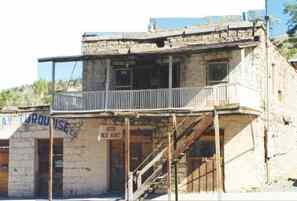
Meat Market
Courtesy Dolores Steele
|







